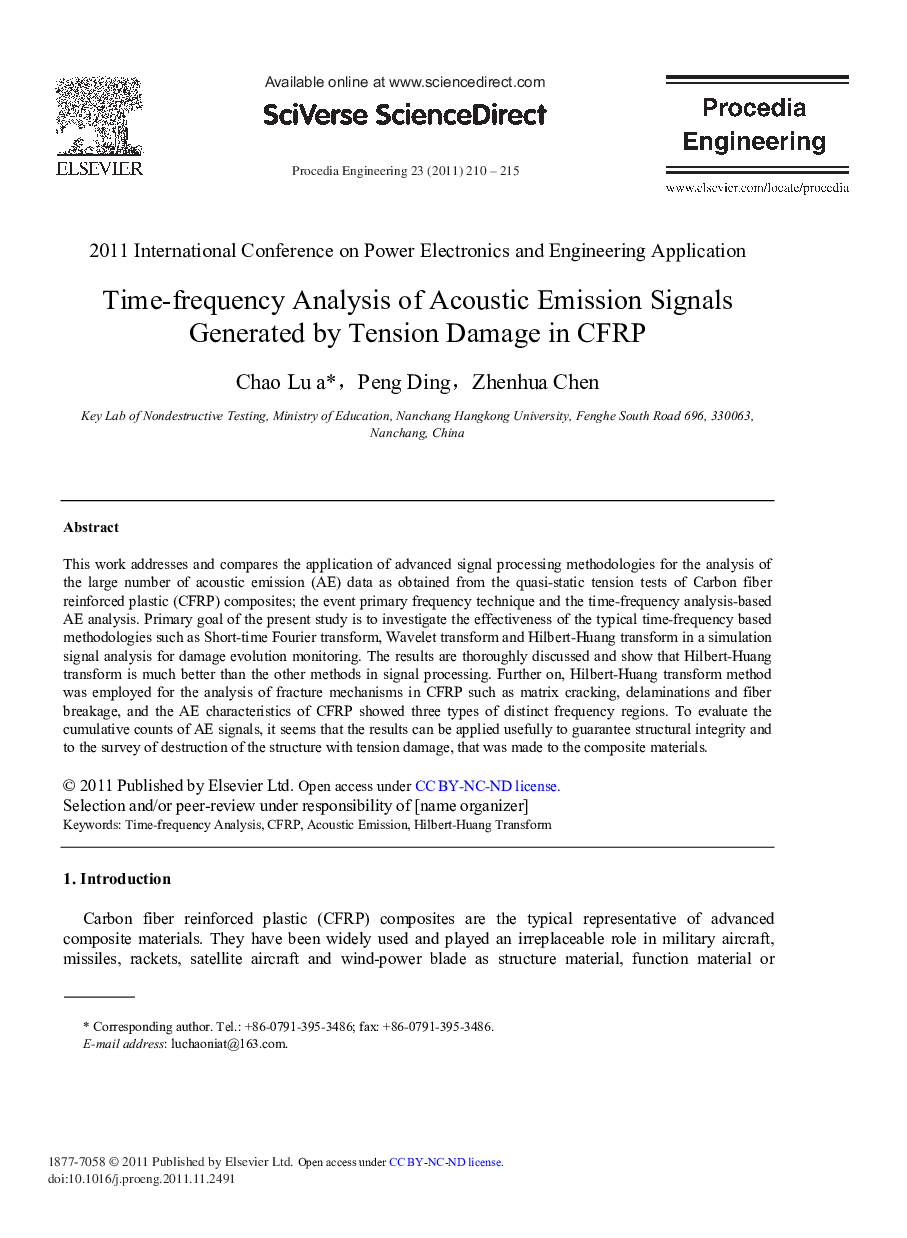| Article ID | Journal | Published Year | Pages | File Type |
|---|---|---|---|---|
| 862918 | Procedia Engineering | 2011 | 6 Pages |
This work addresses and compares the application of advanced signal processing methodologies for the analysis of the large number of acoustic emission (AE) data as obtained from the quasi-static tension tests of Carbon fiber reinforced plastic (CFRP) composites; the event primary frequency technique and the time-frequency analysis-based AE analysis. Primary goal of the present study is to investigate the effectiveness of the typical time-frequency based methodologies such as Short-time Fourier transform, Wavelet transform and Hilbert-Huang transform in a simulation signal analysis for damage evolution monitoring. The results are thoroughly discussed and show that Hilbert-Huang transform is much better than the other methods in signal processing. Further on, Hilbert-Huang transform method was employed for the analysis of fracture mechanisms in CFRP such as matrix cracking, delaminations and fiber breakage, and the AE characteristics of CFRP showed three types of distinct frequency regions. To evaluate the cumulative counts of AE signals, it seems that the results can be applied usefully to guarantee structural integrity and to the survey of destruction of the structure with tension damage, that was made to the composite materials.
